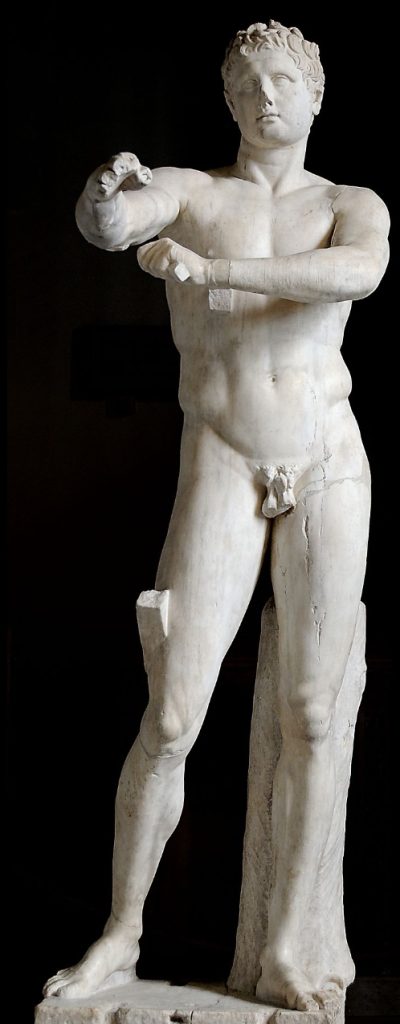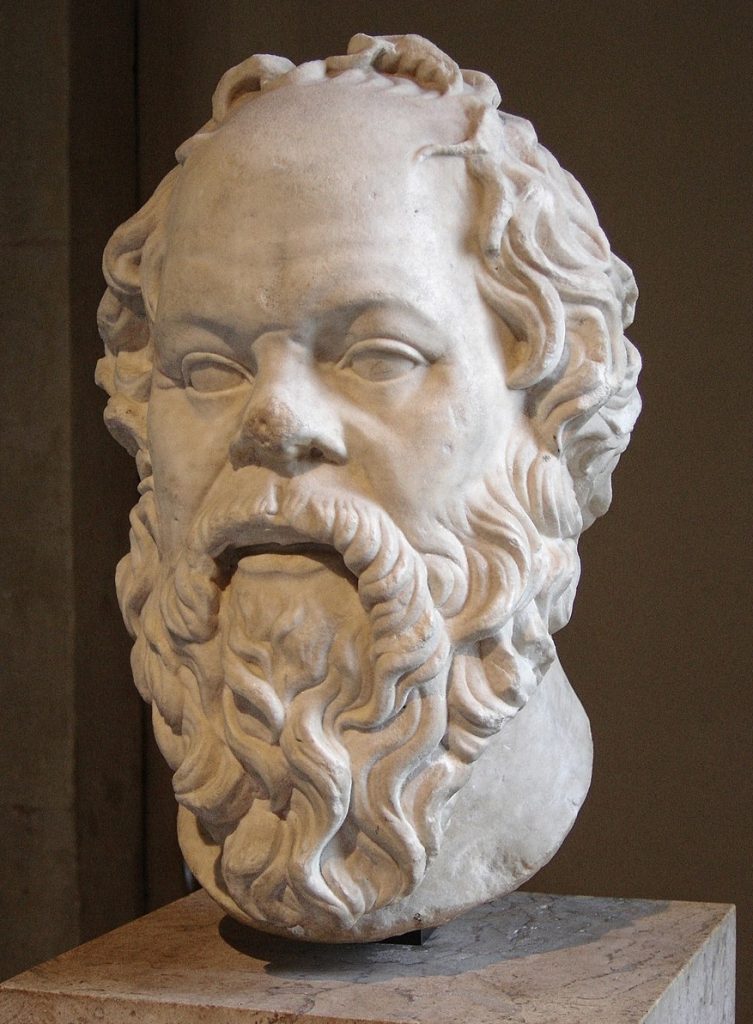Skopas, Prassitele and Lysippus are the three major artists of the IV century in classical Greece, which rise to enormous fame, even if it is a complex period in which many different stylistic currents are born.
With the beginning of the IV century we witness the decline of Phidias’ mannerism and a technique spreads to it, where the masses are simplified, the drapery treated in a sober way and a sort of sadness begins to hover in the expressions.
Lysippus
Lysippos of Sicyon, the city where another great artist, Polykleitos, was born, is an artist active in the second half of the 4th century and is a sculptor who works at the court of Alexander the Great. She is the first figure we encounter of a court artist, at an emperor’s.
With Lysippus we consider the culture that we define as Hellenistic open.
She is an artist who still has her roots in classical culture but who opens the doors to the Hellenistic one.
She embodies the artist’s passage from the city patronage to the court patronage, reworks the Polycletian canon and introduces into Greek culture an inclination towards naturalism which then throughout the Hellenistic period becomes the supporting basis of the new culture.
He was an author who travelled and sculpted a lot and his works were not confined to the court but brought in Rome, Constantinople and a large number of copies were made. However, no original has reached us.
Apoxyomenos
Apoxyomenos literally means “athlete who cleanses himself”, who washes himself. The theme at first glance would still seem to be the theme of the naked male figure, but this theme has been emptied of any internal meaning.
The athlete is depicted in the least heroic moment of his actions. He is not a winning athlete, but in a casual and everyday moment. So we observe how the apparently equal themes, but in reality profoundly changed.
It is important that the Polycletian canon is reformed. Lysippus maintains the distinction between the straight leg and the bent one, but we observe that the weight of the figure is also resting on the bent one. The weight is balanced.

Author Lysippus
Date Latin copy of the Claudian age from a Greek bronze original from 330-320 BC. circa
Material Pentelic marble
Height 205 cm
Location Vatican Museums, Vatican City
Source: Wikipedia public domain
We observe that the Polycletian proportions are elongated while the head becomes smaller. Furthermore, the arms are both stretched forward, accompanied by a slight bending of the body. Lysippos completely and forever breaks the element of frontality.
The statue that now has an absolute mastery of space is made to be seen from many points of view and from every point of view it shows that it is in a relationship with external space.
The Apoxyomenos is one of the most celebrated works of Lysippos, who also became very famous as a portraitist. His portraits of Alexander the Great are famous, of which many copies remain. The sovereign is depicted with his gaze turned towards the sky, an imposing head of hair, extremely lively and brilliant eyes.
Through the portrait of Alexander the court portrait finds a sort of model offinitive that will remain unchanged until the Middle Ages. What is represented is intended to refer to a warrior master of his own destiny, represented in all his power but also as a sort of divinity.
Bust of Socrates
Another very famous work was the portrait of Socrates, commissioned to Lysippos by the Athenians, who placed it in the Kerameikos, the neighborhood dedicated to the memory of the great Athenian citizens. Lysippos sets a volumetric structure visible from many points. He is represented as a man of little beauty, but overcome through great intelligence.

The thoughtfulness of the face gives this man great dignity. Lysippus sets the rules for portraiture, which will be a very popular genre throughout the Hellenistic period.


